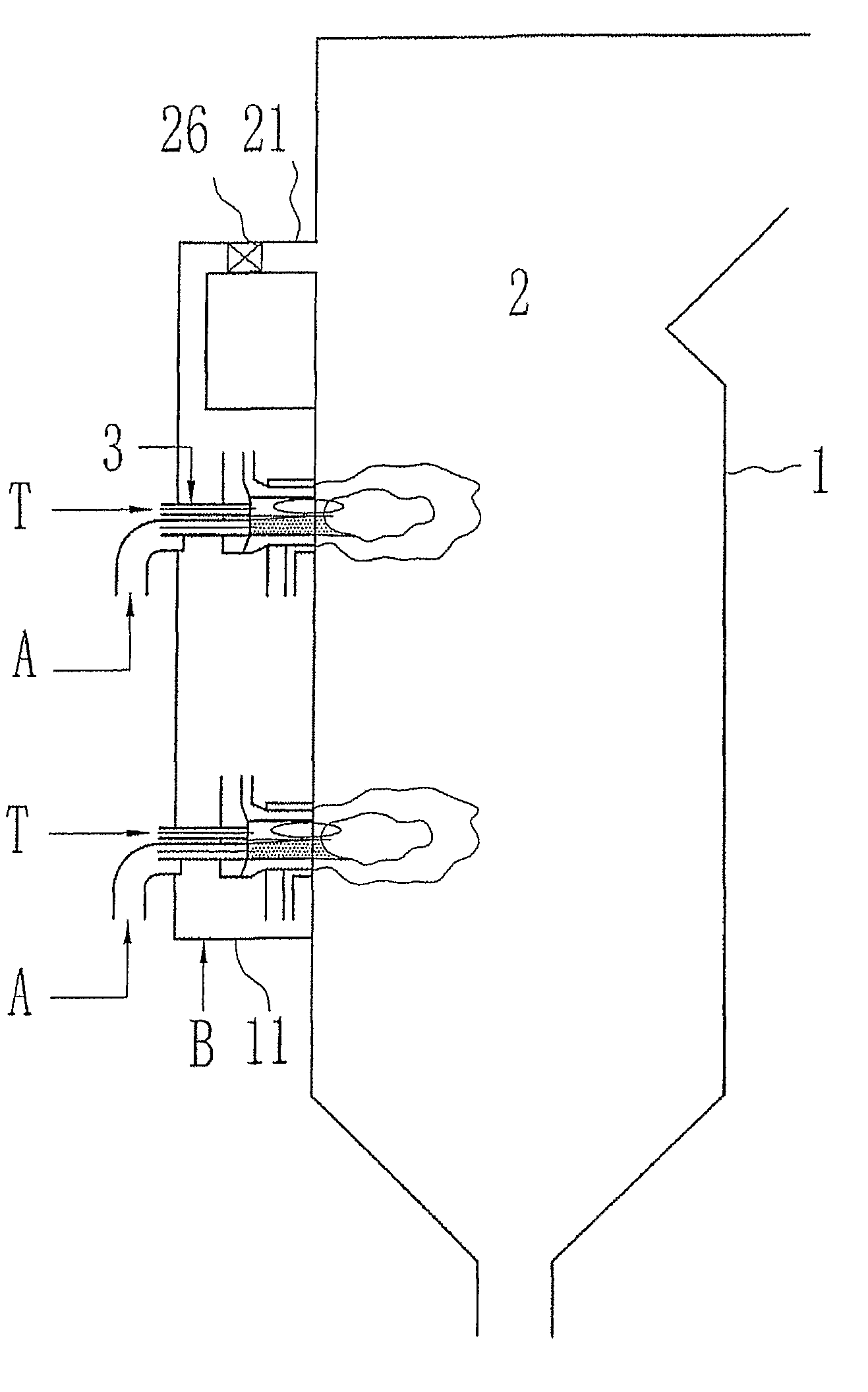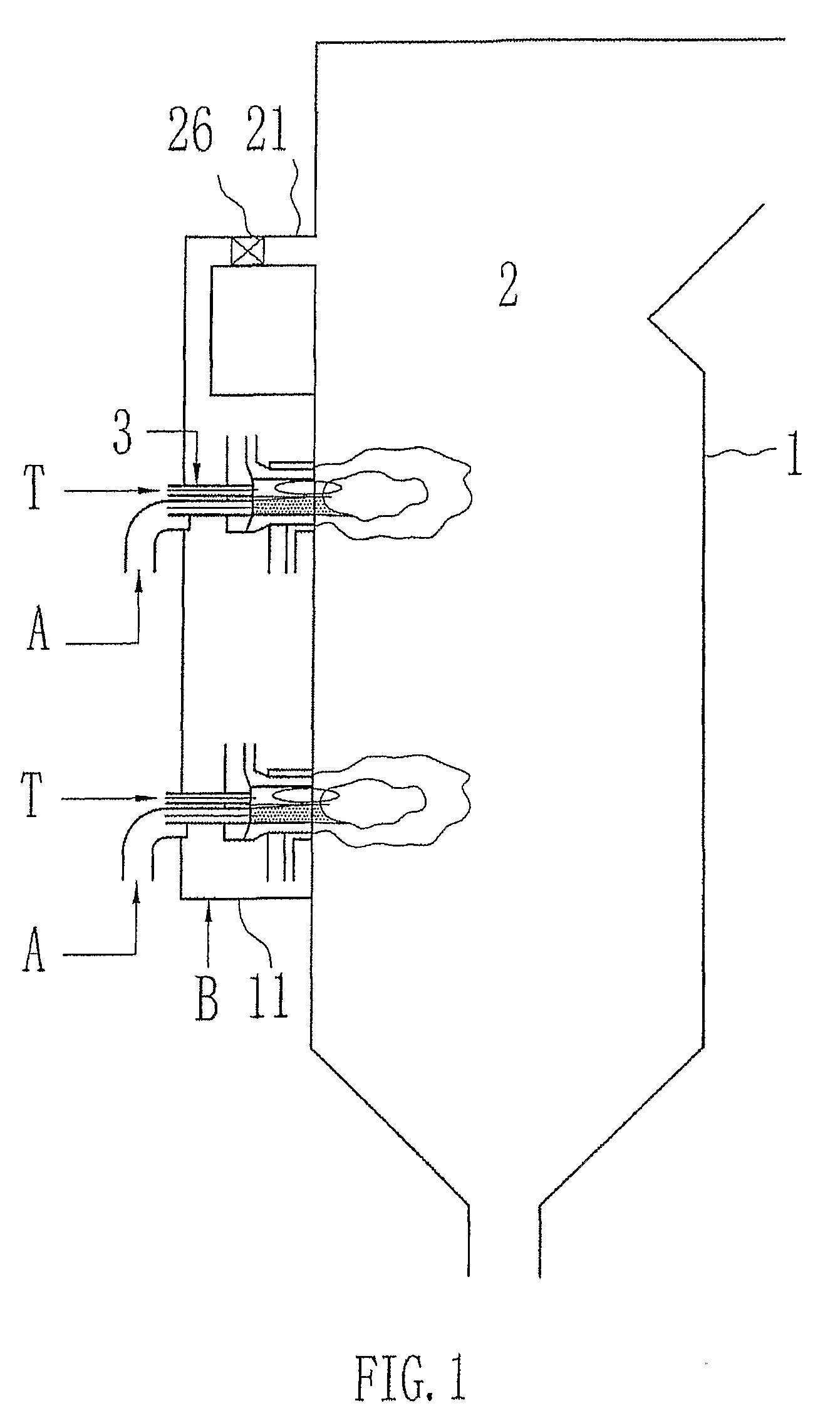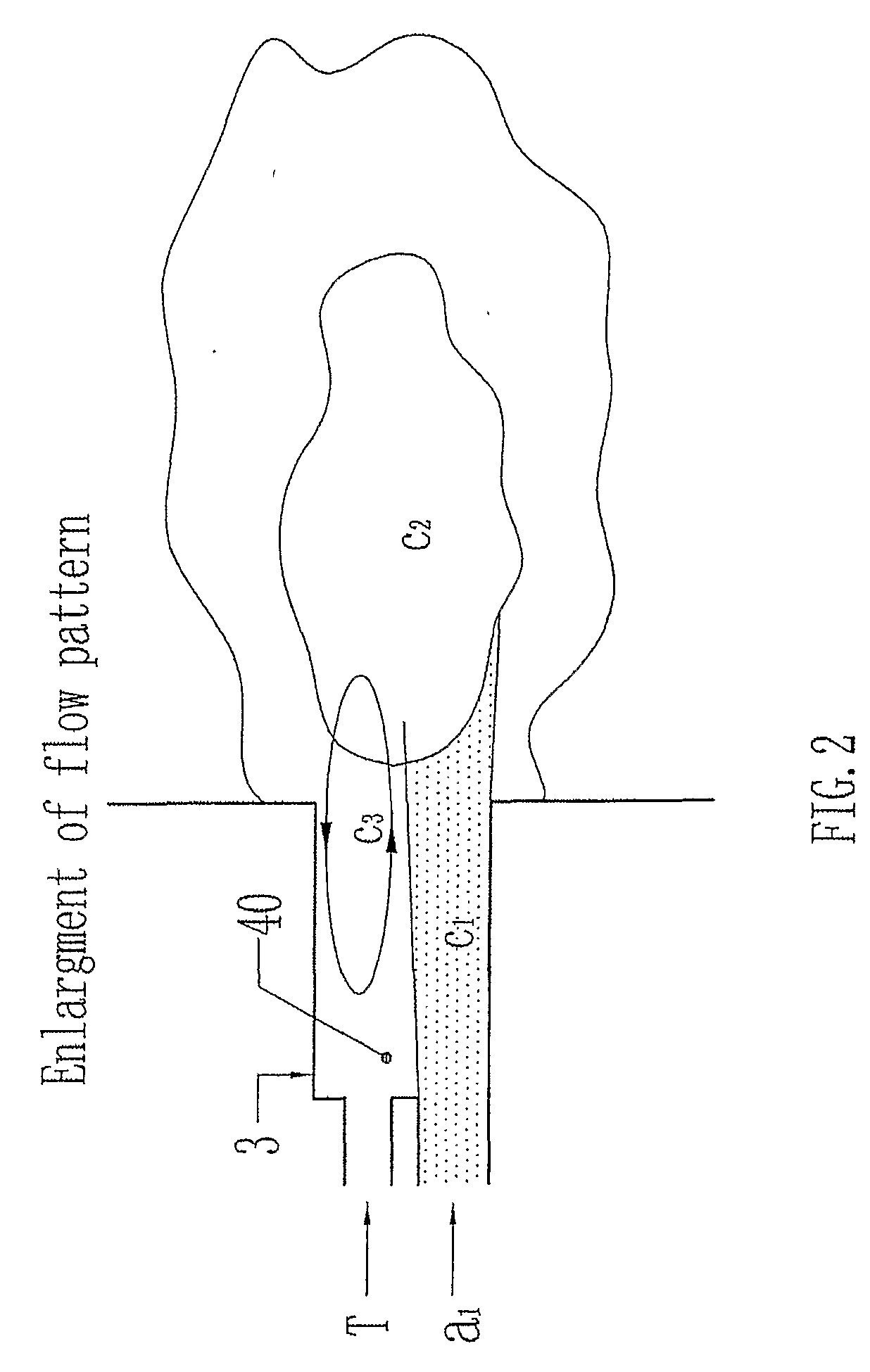Combustion Method and System
a combustion system and combustion method technology, applied in the direction of combustion types, fuel supply regulation, lighting and heating apparatuses, etc., can solve the problems of prior art devices that cannot recognize the change and devices based on the technology often do not achieve the optimum nox reduction, and devices that cannot quickly, or cannot quickly, adjust the operating parameters, etc., to reduce the difference, reduce slagging, and reduce nox emission
- Summary
- Abstract
- Description
- Claims
- Application Information
AI Technical Summary
Benefits of technology
Problems solved by technology
Method used
Image
Examples
Embodiment Construction
[0033]The preferred embodiments of the present invention described below are discussed sometimes in terms of coal combustion, and in terms of air being the gaseous carrier and oxidant. The techniques described are applicable to any other pulverized solid fuel and any other gaseous carrier. The invention will be described with the aid of the Figures, yet a description that refers to the Figures is not used to limit the scope of the invention.
[0034]FIG. 1 to 4 show a preferred embodiment of a swirling burner according to the present invention. Some embodiments of the burner are described in more detail in FIGS. 4 and 5. The invention also encompasses straight-flow burners where the secondary stream or / and the other streams is (are) fed into the combustion chamber in a straight flow.
[0035]FIG. 1 shows a combustion system includes a burner 3 and a combustion device 1 having a chamber 2. The combustion device of the present invention can be any apparatus within which combustion takes pla...
PUM
 Login to View More
Login to View More Abstract
Description
Claims
Application Information
 Login to View More
Login to View More - R&D
- Intellectual Property
- Life Sciences
- Materials
- Tech Scout
- Unparalleled Data Quality
- Higher Quality Content
- 60% Fewer Hallucinations
Browse by: Latest US Patents, China's latest patents, Technical Efficacy Thesaurus, Application Domain, Technology Topic, Popular Technical Reports.
© 2025 PatSnap. All rights reserved.Legal|Privacy policy|Modern Slavery Act Transparency Statement|Sitemap|About US| Contact US: help@patsnap.com



